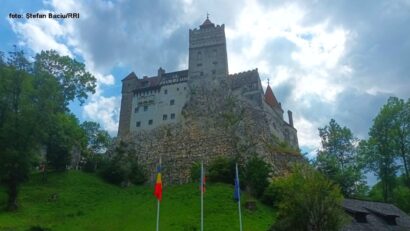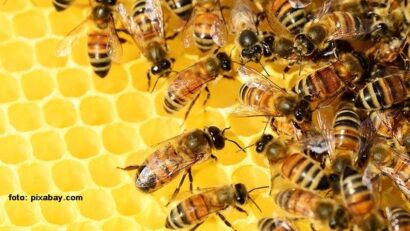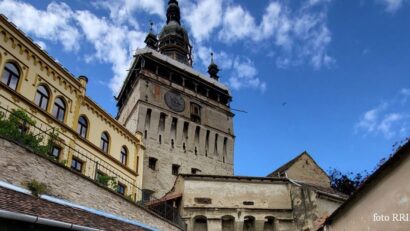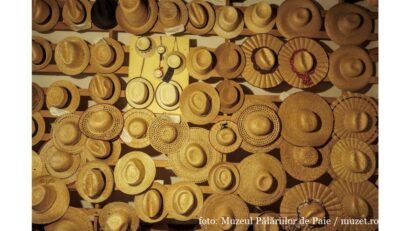The Princes Route Contest
We continue our travels as part of our prize winning contest, “From the Wine Route to the Princes Route.
Ana-Maria Cononovici, 23.01.2014, 12:57
The competition currently run by Radio Romania International is about Prahova County, in south central Romania, whose capital is the city of Ploiesti, and is inspired by a series of tourist promotion programmes run by Prahova County Council, called the Fruit Route, the Wine Route and the Princes Route. Today we take the Princes Route, a promotional route for historical sites in Prahova County. Our guide this time is Anca Baciu, general secretary of the Association for the Promotion and Development of Tourism in Prahova:
“The Princes Route is a tourist circuit for art and history lovers. Here tourists can enjoy traces of Wallachian history in the Prahova region, traces of human existence in these parts and the traces left by the rulers Vlad the Impaler, Michael the Brave and Matthew Basarab. You can also find here the ruins of some of the churches built by these rulers, as well as palaces and other architectural landmarks.”
We start our journey in the village of Floresti, which is located in the west of Prahova County and covers the southern part of the Carpathian Mountains and some of the surrounding flat areas. The beginnings of the village are deeply rooted in history. In its surroundings, archaeologists have discovered traces of Roman pottery and coins bearing the likeness of Emperor Trajan. Anca Baciu told us what else we could find in the area:
“One of the most important and most beautiful sites is the Little Trianon Palace in Floresti, also known as the Cantacuzino Palace. It was built by Gheorghe Grigore Cantacuzino, who was nicknamed the Nabob, for his niece Alice. The palace is modelled after the Little Trianon Palace in France, with the latest in technology at the time. Unfortunately, time has not been kind to it, but if you get to Floresti you can still see how beautiful the domain used to be in its time.”
The design of the palace belonged to architect Ion Berindey, and is inspired by the Little Trianon Palace in the garden of Versailles Palace, in France. The palace, which used to be known as the “Princess Palace”, had 15 rooms on its ground floor, including a grand ballroom of 70 square meters. The palace is built of bricks, with a polished lime rock face imitating in structure the Little Trianon, with 3 uneven levels, one half underground, a ground floor and a top floor, while also borrowing part of the façade elements of the Grand Trianon Palace. The ten neo-Classical columns decorating the façade of the palace in Floresti are grouped in pairs, with the exception of the extremes, just as in the case of the Grand Trianon, which has 16 columns.
Aside from this building, which was erected between 1910 and 1916, other sites worth visiting in the area are the church dedicated to the Dormition of the Virgin in Calinesti built in 1640, the Holy Trinity Church built in 1887 and painted by Gheorghe Tatarascu, and the Mavros Cantacuzino Mansion with its chapel, built between 1821 and 1825. The Princes Route allows us to discover places that are almost unknown today, but which played an important role in the past. Here is Anca Baciu once again:
“The route has been designed to start from Dambovita towards Buzau county, along the Cricov river valley. At the moment, the route includes four places, but there will be 18 of them at the end of the project. You can visit sites in Filipestii de Targ, Filipestii de Padure, Aricestii Rahtivani and Floresti, as well as in Ploiesti. In each of these places, the sites which form part of the Princes Route are indicated accordingly. You can also see signs for sites generally dating from the 18th and even 16th centuries.”
The route takes visitors to many places bearing the names of Romanian boyars. The village of Filipesti, for example, is reminiscent of the Filipescu boyar family, while Aricestii-Rahtivani was named after the Aricesti noble family. Anca Baciu told us about other interesting sites along the Princes Route:
“In Filipestii de Padure you can find the ruins of Matei and Toma Cantacuzino’s residence and the Three Hierarchs Church, whose building was finished in 1688. In Filpestii de Targ you can still see the ruins of the old post office building, a stone cross dating from the time of Matthew Basarab, an old water mill, the Pana Filipescu residence and the church dedicated to the Dormition of the Virgin Mary. In Aricestii Rahtivani you can visit the Saint Elijah and Saint Nicholas Churches, the ruins of the Penesti church, Princess Vacarescu’s residence and Saint Michael and Gabriel’s Church in Nedelea, dating from 1793. Also, you can visit a stone cross located in the garden of the special needs school in Nedelea.“
By the time it is completed, the Princes Route will be crossing the villages of Ciorani, Draganesti, Gherghita, Balta Doamnei, Gorgota, Tinosu, Brazi, Targsoru Vechi, Aricestii Rahtivani and Filipestii de Targ. It then enters Dambovita County towards Targoviste, along sites where important archaeological remains have been discovered. To end, here’s Anca Baciu with a special invitation to visitors:
“There are lots of tourist sites in the area and the visitor must be patient enough to discover them and see their true beauty. We are looking forward to welcoming you on the Princes Route, the Wine Route and the Fruits Route. Come to Prahova and see the traces of Michael the Brave’s passing through the area. The first to bring together all Romanian provinces, he set up a temporary camp in Ploiesti, before achieving the great union of 1600.”
Tune in to our programmes, our website and Facebook, Twitter, Pinterest and Flikcr pages and find out more about our competition. You can send your entries by March 15, 2014.

